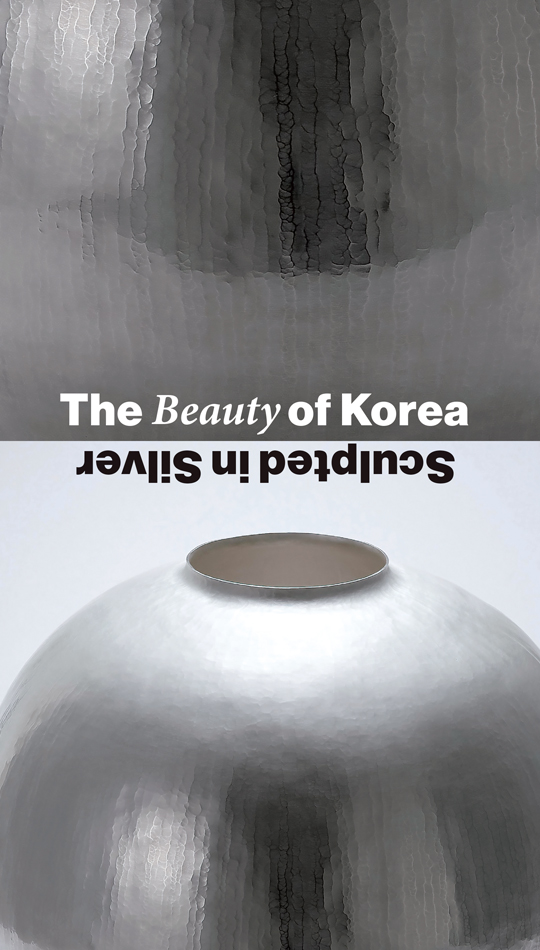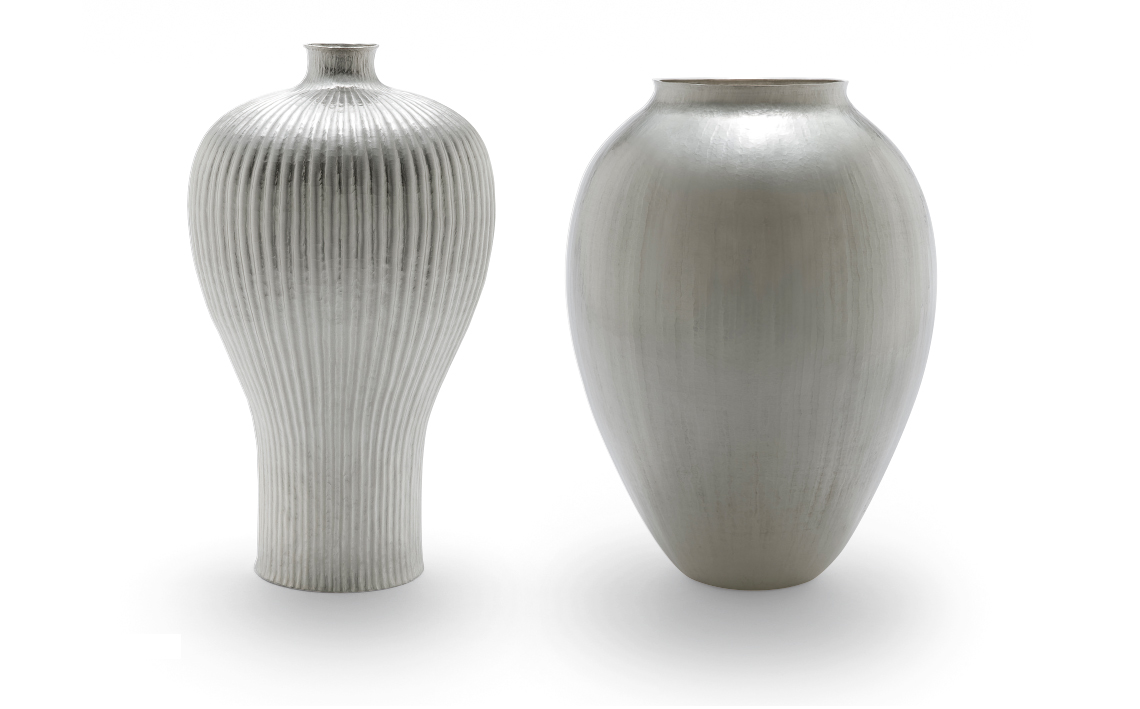There is a work that takes thousands of strikes to manifest―the art of William S.H. Lee. William Lee is a metal craft artist who sculpts silver plates into the form of Bowls, by hammering. Meeting the elegance emanating from Korea’s unique curvature with the subtly shining silver material, his works blossom beautifully in unprecedented ways. His works are recognized globally, being held in prestigious museums such as the Victoria and Albert Museum in the U.K. and the Philadelphia Museum of Art in the United States. He validated his talent and skills by winning the Craft Prize 2023, organized by the Ministry of Culture, Sports and Tourism and the Korea Craft and Design Foundation.


Writer.
Sung Ji Yeon
Photography.
KC Studio, 516 Studio
William S.H. Lee
Q. What led you to embark on the path of a metal craft artist?
During high school, I learned metalworking. Using the skills gained during that time, I began crafting accessories like earrings at a metal-working shop. However, my original passion for large-scale projects, such as tableware production, prompted me to transition to a tableware workshop. There, under the guidance of the workshop director at that time, I learned the skills and craftsmanship―moving from accessories to significant crafting tasks. At some point, I wanted to do something that was not what others wanted but something of my own. To achieve that, I felt the need for further study. Thus, I ventured to England, renowned for silver metalwork, for language studies. While studying at Camberwell University in London, I embarked on a full-fledged career as an artist. Presently, I am active as a metalwork artist, traveling between Korea and the U.K.
Q. What makes metal appealing to you?
Metal has been both science and industry since ancient times. It is a material that always co-exists with human life and has also existed as art. The charm of metal lies in its association with “everything about humans.” Moreover, with metal, you can create anything you want. That’s why I love working with metal.
Q. What techniques do you use when working?
I create my works using the hand raising technique―shaping the form by hammering metal sheets. It is the most basic technique among metalworking techniques. I prefer not to have a smooth surface, so I work to preserve the traces of hammering and the natural coloration.
Q. Why do your works take the form of traditional Korean pottery?
I aspired to leverage my strengths to the fullest extent. Upon reflection on my capabilities, I determined that my forte was capturing the essence of Korean aesthetics. I aimed to instill a sense of familiarity rooted in tradition while avoiding complete adherence to tradition. That is why I work to harmonize the sentiment of tradition with a modern image. At the same time, I wanted to use my skills to refine the entire surface of the work and create lines that only I could produce to incorporate my current “self” into the work.
 (Left) Meabyeong vase, 2022, silver, 260x260x420mm (Right) Dok, 2022, silver, 280x280x400mm
(Left) Meabyeong vase, 2022, silver, 260x260x420mm (Right) Dok, 2022, silver, 280x280x400mm
Q. Even in this award-winning piece (Untitled II), your identity as an artist seems embedded. Are there any differences between this work and your previous ones?
Firstly, in my previous works, the form of the work and the decorative lines on the surface harmonized and balanced each other. This is more easily understood when you look at signature pieces like a pot, a maebyeong vase, or a moon jar. In the latest award-winning works, I produced them in a more open shape than before. I maximized the size attainable from a single sheet of silver. At the same time, I focused on creating lines that flow on the surface in various patterns.
Q. What aspects of yourself are captured in this work?
Silver craftsmen who predominantly employ the forging technique typically rely on standard silver sheets supplied by factories. However, I worked with a 31kg block of silver in this particular piece. Since it initially exceeded industrial specifications, I couldn’t receive silver sheets from the factory. In such cases, you have to refine the raw material, “silver block,” from the beginning without the aid of machines. The entire process of shaping can only be done through manual handwork―stretching, refining, transforming and decorating the silver directly. Through this hands-on process, a craftsman develops his approach to creating artwork.
My work, too, took six months to complete. Through this work, I wanted to convey the feeling of experiencing the craftsmanship production process before industrialization. I incorporated the working conditions and limitations that artists face into this work, expressing our situation.
Q. Given your long career as an artist, can you share the most memorable moment?
I have met a collector who understood my work 100 percent―identifying my Korean identity solely through the artwork. There was a person who understood the intention and direction of the work, purchased it and even donated it to a museum.
Q. Finally, please share your thoughts on winning of the Craft Prize 2023 and your future plans.
I feel like the Craft Prize 2023 was given to me this year as an encouragement for me to work even harder. I will strive to present good work in the future.
When creating work, I now want to take on different challenges. Until now, my focus was on designing and crafting works with a functional purpose. In the future, I aim to create purposeless objects and artworks that transcend mere functionality. I hope to sustain this creative journey and consistently dedicate myself to it in good health so that I can incorporate my current “self” into the work.
 Untitled II, 2023, silver, 760x760x320mm
Untitled II, 2023, silver, 760x760x320mm